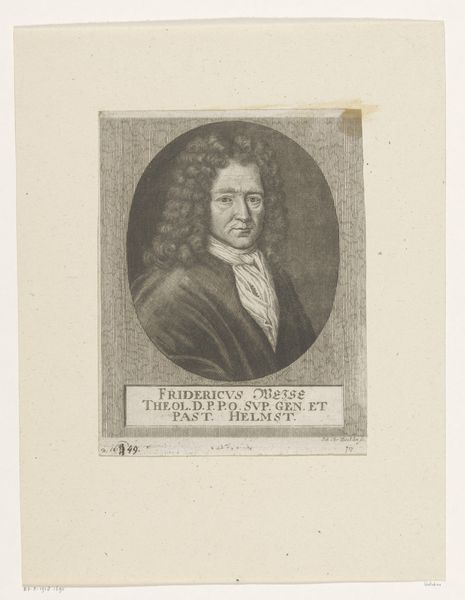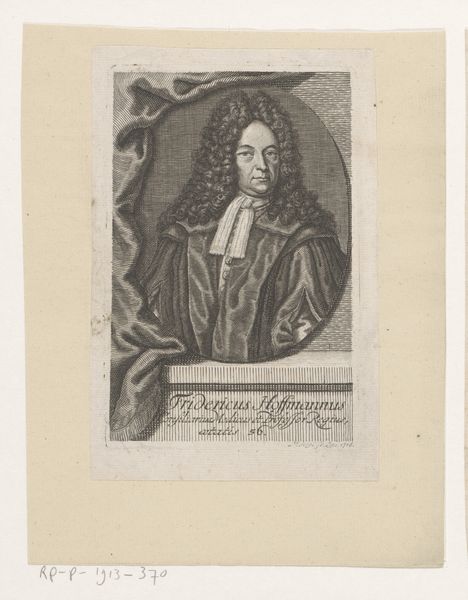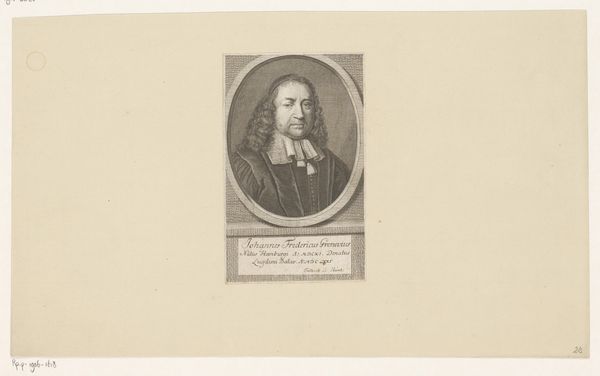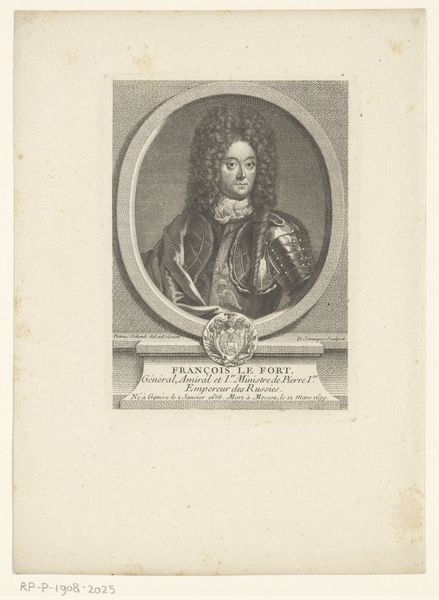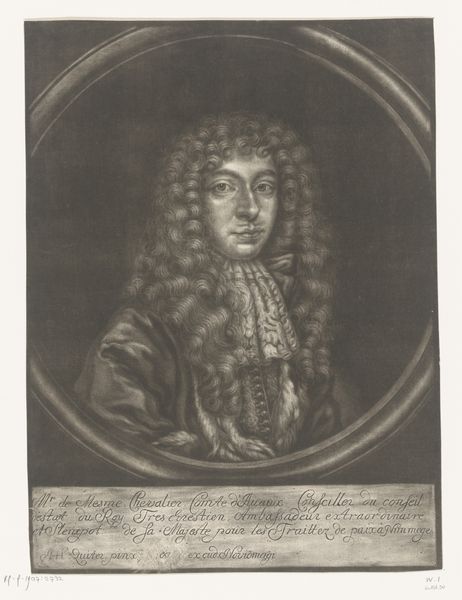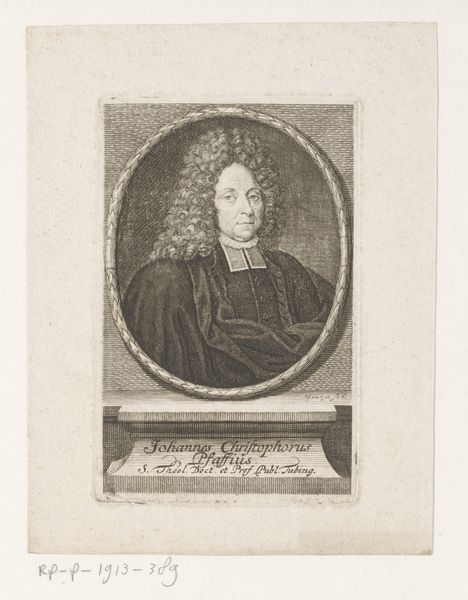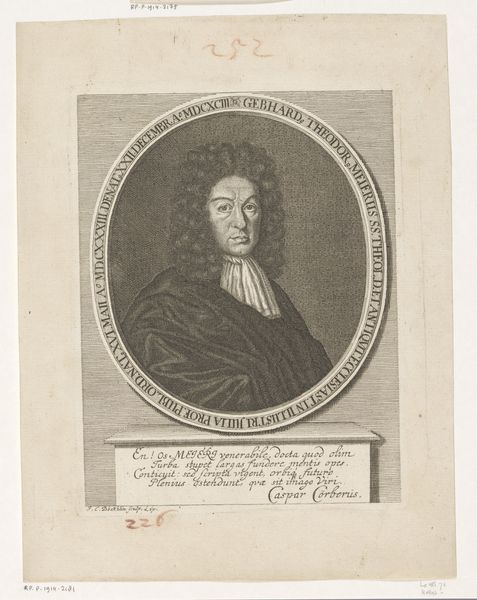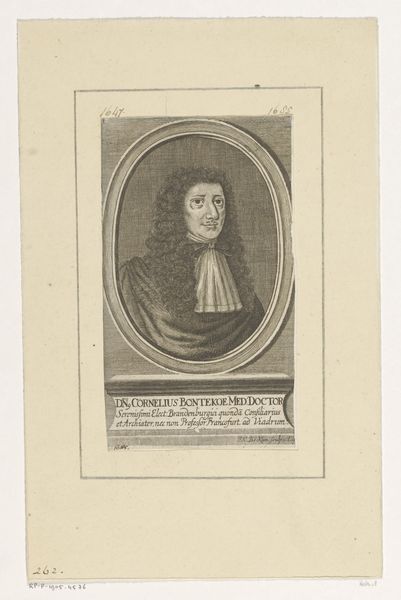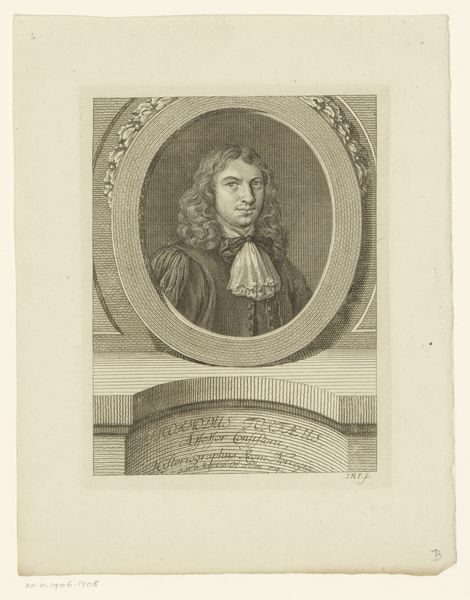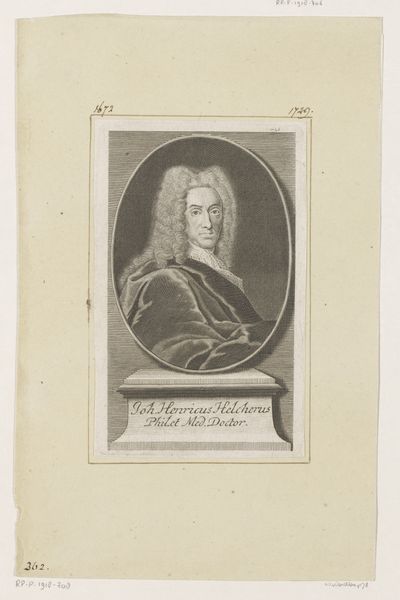
print, engraving
#
portrait
#
baroque
# print
#
history-painting
#
engraving
Dimensions: height 166 mm, width 100 mm
Copyright: Rijks Museum: Open Domain
Curator: Let's turn our attention to this fascinating engraving titled "Portret van Peter King" dating from 1731, housed here at the Rijksmuseum, created by Martin Bernigeroth. It depicts Peter King, Baron of Ockham and Chancellor of Great Britain. Editor: My first impression is one of reserved power. The meticulous details in the engraving, especially in his wig and robe, project an aura of formality and authority. There's also a certain melancholy in his gaze. Curator: Absolutely, and it's essential to consider the societal context of the early 18th century. As Chancellor, King was a key figure within a power structure often built upon exploitation and exclusion. This portrait is more than just an individual likeness; it embodies the intersection of power, class, and gender within the political landscape of that era. Editor: The oval frame containing his image has always represented importance or an individual of consequence. Note how it almost seems to emerge from a stone-like tablet bearing his title and status—reinforcing a message about legacy and permanence. Curator: The very act of creating and disseminating such a portrait highlights the mechanisms used to reinforce authority and societal norms. Who has the power to be remembered, to have their image preserved and distributed? These were deeply political choices. Editor: Indeed. There’s also the matter of what’s missing. What about King's achievements or deeds? The symbols and adornments act as emblems. They whisper volumes of social meaning that would have been crystal clear for a person during the Baroque Era. Curator: Exactly. What responsibilities does it hold for us to deconstruct those images critically to grasp the full scope of the social forces represented in the artwork? Understanding the relationship of images to power requires that historical analysis. Editor: So, next time when we're here, do you think you will share with visitors a little bit more about the significance of the visual elements used during the 1700s to showcase personal identity. Curator: I think I might. Thank you. Editor: I would say thank you for illuminating how those artistic productions speak to even deeper historical and cultural systems, always shaping and defining people.
Comments
No comments
Be the first to comment and join the conversation on the ultimate creative platform.
